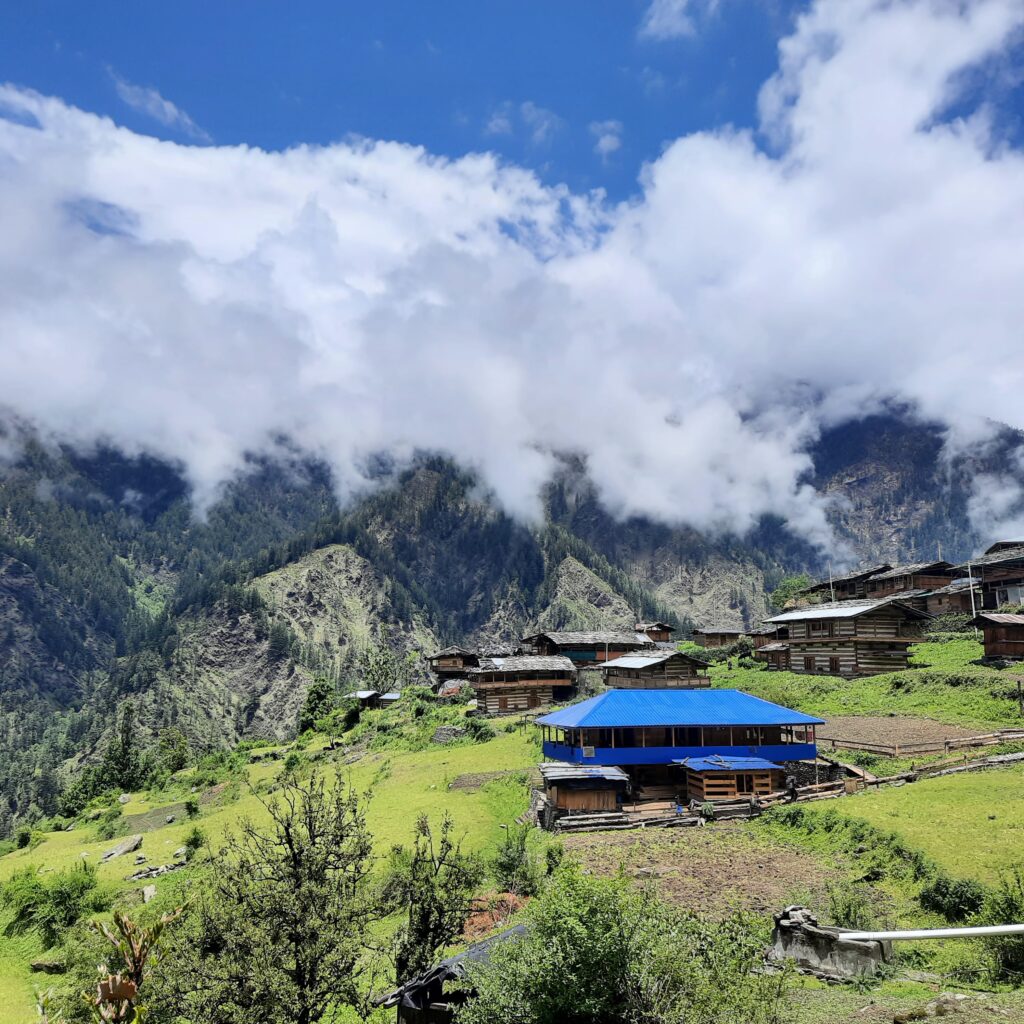
The Purple-Headed Mountains, Rivers Running by, and Dhatmeer Village
The Indian culture is such an ancient, diverse, and sustainable one. Different places have different practices and traditions, but they are all united by their connection with nature. Let me elaborate on this by explaining how the small village of Dhatmeer in Northern Uttarakhand functions.
With a small population, Dhatmeer is on the outskirts of Uttarakhand near Har-Ki-Dun Valley. Dhatmeer has no internet connectivity, cellphone range, or any access to technology. They don’t watch movies or eat our conventional “junk” foods (partly because they don’t have access to such “luxuries” but mainly because they feel no need for them). And their monotonous routines do not recognize the concepts of “weekends” or holidays. Every villager has almost the same pattern- the women wake up and cook while the men fetch water, take their cattle for grazing, and the men cut cuboidal logs from the nearby reserves of Pine, Deodar, and Chestnut Oak trees. All the villagers meal together and share their food. Once they are done with the first half of the day, they head down to the fields to cultivate their crops. They harvest these crops, consume what they gather, and sell whatever is left to vendors in nearby towns. Most of their income comes from the wholesale of apples.
The people of Dhatmeer worship the Hindu God “Shiva.” Also known as the protector, Shiva is one of the three most powerful Gods in Hindu Mythology. He is regarded as the God of endings and the afterlife, and more importantly, rests on “Kailash Parvat” (The Kailash Mountain). Since he is a resider of the mountains and not the heavens, the people of Dhatmeer and nearby villages believe in his ability to protect all those that consider the mountains their homes. They build temples for him in the central points of their villages and pray to him to protect them from all harm. On the roofs of these temples are wooden figurines of the animals that they look after- goats, hens, cows, and sheep. The reason for this was rather vague, but I assume they see their Gods in these animals because of how much they provide the villagers.
Dhatmeer only has around 20 residents, but the village structure is laid out so that each of these 20 residents is provided for. The architectural layout of this village is such that the lower level has all the cattle and cattle farms; a few feet above, you’ll find the sheep and goats, and the upper level consists of their homes and storage units. This is because human houses have sturdier supports than goat and sheep shelters and, in turn, cattle farms. So, these houses can better support themselves during landslides or other natural calamities. They also have storage rooms called “Kothaars,” where they store food (grains, lentils, and vegetables) so that they are prepared for calamities. Kothaars are small cupboard-like units made of plywood that have strong exteriors. It truly is impressive to see how smart yet simple their lifestyles are. They have contingency plans ready for every situation, have a fixed routine, and are content with what they have.
The villagers of Dhatmeer bring an essential question to mind- What is required for a person to be truly content? Do we take a Buddhist approach and say that a simplistic life is a content life? That ‘greed’ is the cause of all suffering? Dhatmeer attests to this concept. But maybe living so close to nature, with the fresh mountain air and organically grown vegetables, must lead to contentment. After all, a healthy body is a healthy mind. For all we know, the answer to this question might just be ‘Ignorance is Bliss.’ It might even be a combination of the abovementioned characteristics that make Dhatmeer the epitome of serenity.
Whatever may be the reason, this small village. Hidden in the Himalayan range is a happy, healthy, and peaceful coexistence despite its “primordial” and “unevolved” lifestyle. May it is time to consider if it’s not “despite” but rather “because.” With all our gadgets and skyscrapers and “development,” we humans have grown a lot more discontent with life. By providing for all our whims, fancies, and wants, we’ve paved the way to more.
The few brief moments I’ve spent in the mountains have made me a happier person away from cellphone networks, social media, and the internet. Away from the “real world,” the pressures of social convention, and the world’s unhappiness. Sitting in the Har-Ki-Dun Valley (Valley of Gods), staring at the mountains and streams brings to mind the famous song by Bill Staines-
“All things bright and beautiful
All creatures great and small
All things bright and wonderful
The Lord above made them ll
The purple-headed mountains
The rivers running by
The sunsets in the morning
The brightness in the sky.”
Truly, all things bright and beautiful are enough to make a person content with their life. The serenity of the mountains is enough to make us quit wanting more. The Himalayas humble us and make us realize that the world is bigger, so much bigger, than our likes and dislikes, our wants and needs, our sorrows and despair- all of it seems irrelevant in front of the majesty of the mountains.
The people of Dhatmeer are a wonderful reminder of our roots and rich, ancient culture- that maybe it is time for us to return to.